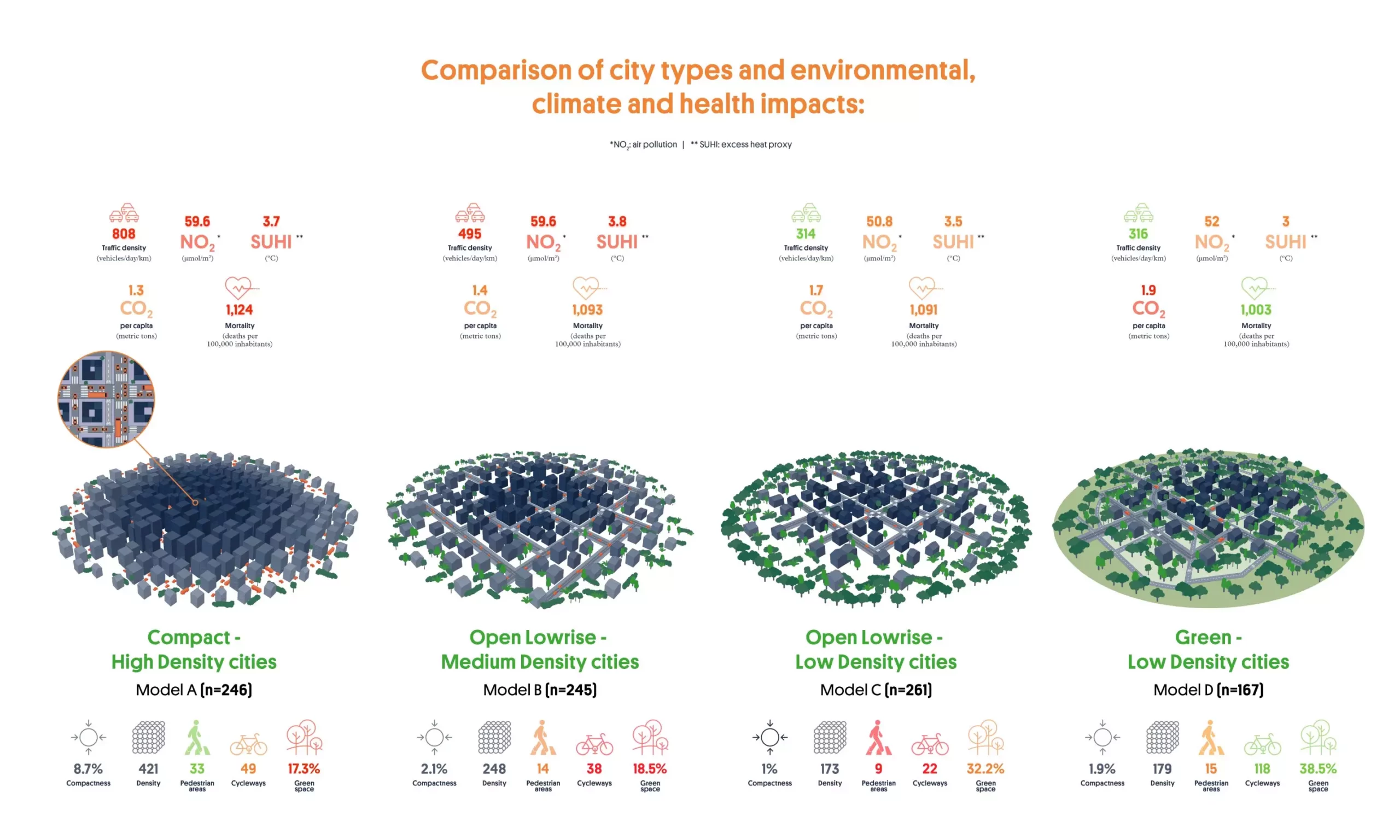Urban areas across Europe are diverse in their configurations and characteristics, which can have a significant impact on human health, environmental quality, and carbon footprint. A recent study conducted by the Barcelona Institute for Global Health (ISGlobal) analyzed 919 European cities to identify four basic urban typologies and their associated implications. These findings shed light on the importance of urban planning and design in creating cities that are both healthy and sustainable.
Compact-high density cities, such as Barcelona, Milan, Paris, and Basel, are characterized by small surface areas, high population densities, and a high concentration of inhabitants. While these cities offer efficient short-distance mobility options, such as dense public transport networks and infrastructure for walking and cycling, they suffer from poor air quality, low availability of green spaces, and a strong urban heat island effect. Despite the high mortality rates associated with compact-high density cities, they have lower greenhouse gas emissions per capita due to their energy-efficient nature.
Cities like Brussels, Dublin, and Leipzig fall under the category of open lowrise-medium density cities, which have smaller surface areas, moderate population densities, and a higher density of roads for motorized traffic compared to compact-high density cities. These cities offer a balance between urban and green spaces, but still exhibit adverse exposure to air pollution and urban heat island effect due to high motorized traffic flows. As a result, open lowrise-medium density cities have higher mortality rates compared to other urban typologies.
Open lowrise-low density cities, including Pisa, Oviedo, and Toulouse, occupy larger surface areas with lower population densities. These cities have a limited availability of pedestrian areas and cycleways, along with moderate to high availability of green natural areas towards the outskirts. While open lowrise-low density cities offer a more spacious living environment, they also require longer commutes and are less energy efficient, resulting in a higher carbon footprint per capita.
The low-density green cities, such as Helsinki, Rennes, Aarhus, and Stockholm, have large surface areas with low population densities and an emphasis on natural green spaces. These sprawled cities offer a higher quality of air and lower urban heat island effect, leading to lower mortality rates. However, their decentralized nature requires longer commutes and results in a higher carbon footprint per capita compared to other urban typologies.
Compact-high density and open lowrise-medium density cities exhibit the highest motorized traffic flows, resulting in adverse exposure to air pollution and urban heat island effect, leading to higher mortality rates. On the other hand, low-density green cities have lower mortality rates due to their better air quality and lower urban heat island effect. However, they have a higher carbon footprint per capita due to longer commutes and lower energy efficiency. Therefore, finding a balance between population density, green spaces, and transportation infrastructure is crucial in creating cities that are both healthy and sustainable.
The urban configuration of cities in Europe plays a significant role in determining their impact on human health, environmental quality, and carbon footprint. While compact cities offer advantages in terms of efficiency and sustainability, they also face challenges such as poor air quality and lack of green spaces. On the other hand, green cities prioritize natural green spaces and air quality, but struggle with longer commutes and higher carbon footprints. Finding a middle ground through innovative urban planning strategies is essential to creating cities that promote health, sustainability, and a reduced carbon footprint.


Leave a Reply